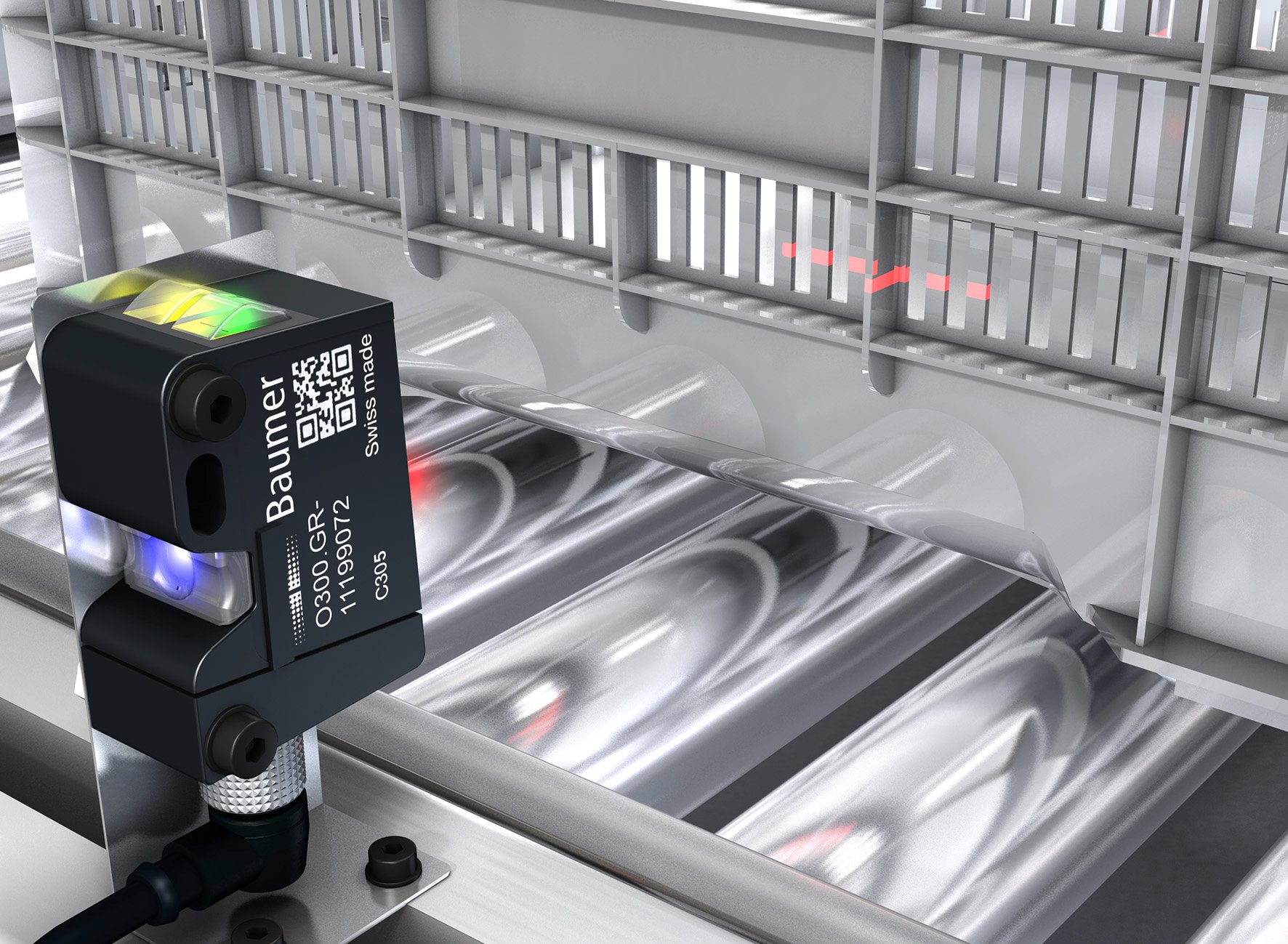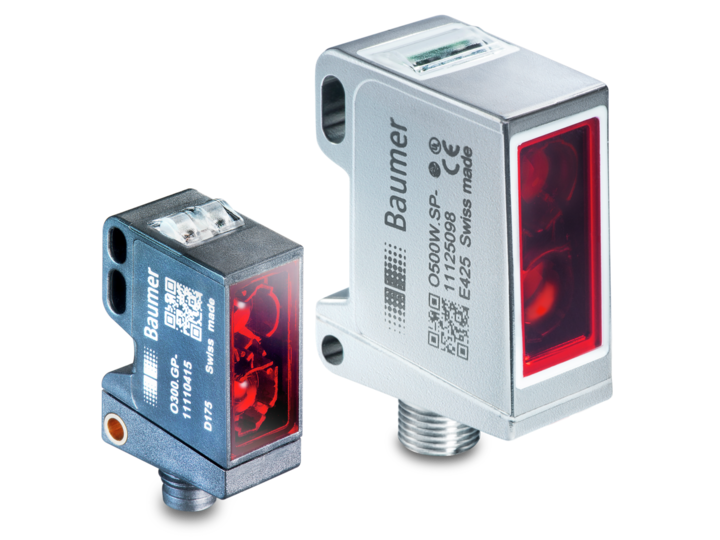Aug 1, 2018
Focus on gaps - Optical O300 miniature sensors with linear beam

Detecting objects with gaps or holes still constitutes a challenge for optical sensors in factory automation. With its new optical O300 miniature sensors with linear beam, Baumer can offer a simple and extremely effective standard presence detection solution for printed circuit boards, pallet cages or even bakery products.
When examining irregular objects with punch or drill holes, a sensor with pointed beam must be aligned very accurately or a time filter used to prolong the switching signal if switching errors are to be avoided. Format changes may require realignment of the sensors or – if the objects are not perfectly aligned or lined up – adjustment of the time filters. This is not the case with the new O300 miniature sensors. Unlike many other optical sensors, the O300 sensors made by Baumer produce a line-shaped beam that is 100 mm long, rather than just a point. The optically aligned axis makes installation very easy, and the sensors are quickly ready for use. There is no need to adjust after format changes. With their extended excess gain, they can even detect very dark or low reflective objects. The positional tolerances and changes in distance that are common among non-guided objects are compensated by mounting the sensors at a distance of up to 180 mm.
As with all sensors in the O300 range, these sensors can be flexibly configured to perfection for the relevant application using tamper-proof and non-wearing qTeach or IO-Link. Pre-defined parameters can be transmitted directly via IO-Link, creating enormous added value when using several sensors to perform the same task. The actual data is stored in both the sensor and the IO-Link Master. Following production changes, the new parameters are automatically transferred to the sensors, which are then immediately ready for use. Production processes can, moreover, be optimised by evaluating the additional data – such as distances or counting functions – that the sensors provide.
Press download
-
Focus on gaps - Optical O300 miniature sensors with linear beam
-
Image


